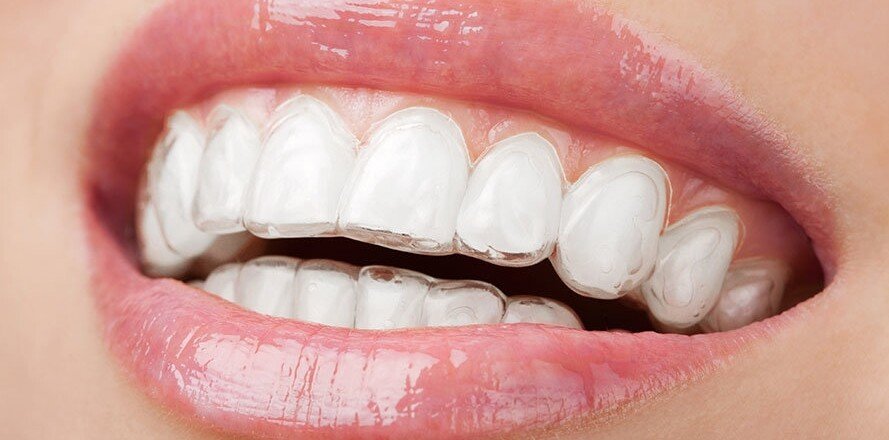Aligners before and after use, showcase a clear difference in teeth alignment, delivering a perfect smile. Aligners represent a significant progression in orthodontic care, transforming the approach to dental alignment by offering a more discreet, comfortable, and effective alternative to traditional braces. This guide explores the evolution of aligners, their role in correcting various dental imperfections, and the remarkable before and after results that highlight their transformative power.
Discover how aligners can address issues like:
- Underbites: Lower teeth protrusion.
- Gap Teeth: Noticeable tooth gaps.
- Open Bites: Teeth don’t meet.
- Crowding: Overlapping, tight teeth.
- Bringing Teeth Together: Closing gaps.
- Facial Injury: Correcting dental trauma.
The aligner journey: progress and transformation
The journey to achieve maximal change with aligners before and after use involves several steps, starting with the initial consultation with the orthodontist and leading to the personalized 3-D production of aligners based on your dental needs and preferences. The treatment typically lasts from 12 to 18 months.
Aligners work by gradually shifting the teeth to a new position, aiming to achieve a perfect bite. It’s important to note that aligners are personalized, and regular consultations are recommended. However, with some aligner companies like SmilePath, fewer dental consultations are required, and aligners can be sent directly to your home. SmilePath aligners impressive results are evident in their before and after transformations.
There are flexible options for using aligners, including daytime and nighttime plans. Regardless of the plan chosen, proper dental care is essential to prevent complications such as infection and staining of the aligners.
The typical journey to achieve a perfect bite with aligners consists of 8 steps, though it may be fewer depending on the aligner provider and the patient’s needs.
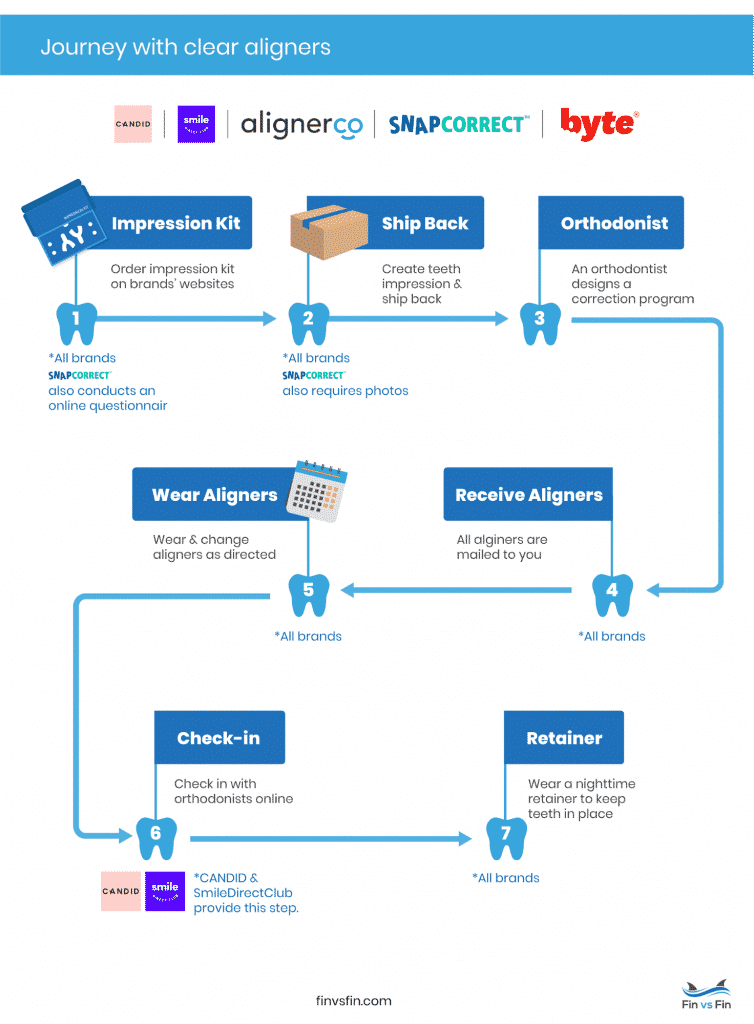
Step 1: Initial consultation – The dentist evaluates the teeth problem to determine the best treatment choice, whether it’s braces or clear aligners.
Step 2: Digital scanning – A machine is used to produce a 3D image of the teeth to ensure a well-fitted clear aligner.
Step 3: Treatment plan design – The orthodontist informs the client about the projected completion time and provides a model of the desired teeth alignment.
Step 4: Aligner fabrication – The aligner company produces an aligner for the perfect smile using the collected scan and data.
Step 5: Receiving and wearing the aligners – The orthodontist teaches the patient how to wear and remove the aligners, and provides guidance on dental care with clear aligners.
Step 6: Changing aligners – This typically occurs every 2 to 3 weeks to shift the teeth to their new position and ensure the patient’s comfort.
Step 7: Monitoring progress – Ensuring that the treatment progress is on track with the aligners before and after use.
Step 8: Completing the treatment – The orthodontist reevaluates the teeth alignment to ensure they have met their target. Retainers may be advised to keep the teeth in place and prevent malocclusion.
Before and after the use of dental aligners
The use of dental aligners marks a significant transformation in orthodontic treatment, both aesthetically and functionally. Before their use, patients often contend with misaligned teeth that can lead to difficulties in maintaining oral hygiene, increased risk of tooth decay, and impaired self-confidence due to the appearance of their smile. After undergoing treatment with dental aligners, many patients experience a dramatic improvement in dental alignment, leading to easier cleaning, reduced oral health issues, and a boost in self-esteem. The nearly invisible nature of aligners also means that patients can achieve these results without the stigma or discomfort traditionally associated with metal braces. Overall, the transition from misalignment to a well-aligned, healthy smile represents a profound enhancement in both dental health and personal well-being.
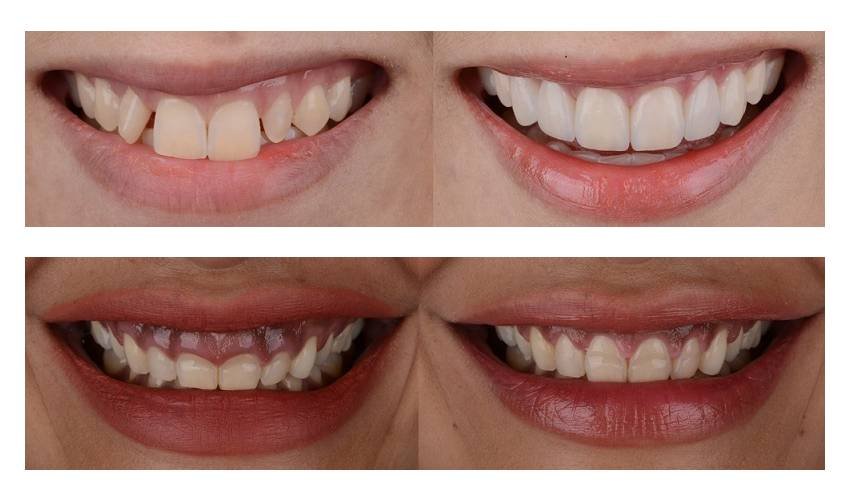
Underbite
Underbite is a dental condition in which the lower teeth protrude more than the front upper teeth. It is a class III malocclusion and is reported to occur in 5% to 10% of individuals. In a normal teeth alignment, the upper front teeth slightly protrude more than the lower teeth.
Underbites are usually genetic, caused by childhood behaviors, and trauma. Some symptoms of underbite include biting the tongue, jaw pain, difficulty chewing, and biting the inner part of the mouth. Complications of underbite can include sleep apnea, a higher risk of dental infections, and headaches.
Aligners before and after use in correcting underbites show marked improvement. Additionally, they can be prevented by avoiding childhood habits such as finger-sucking and the use of pacifiers.
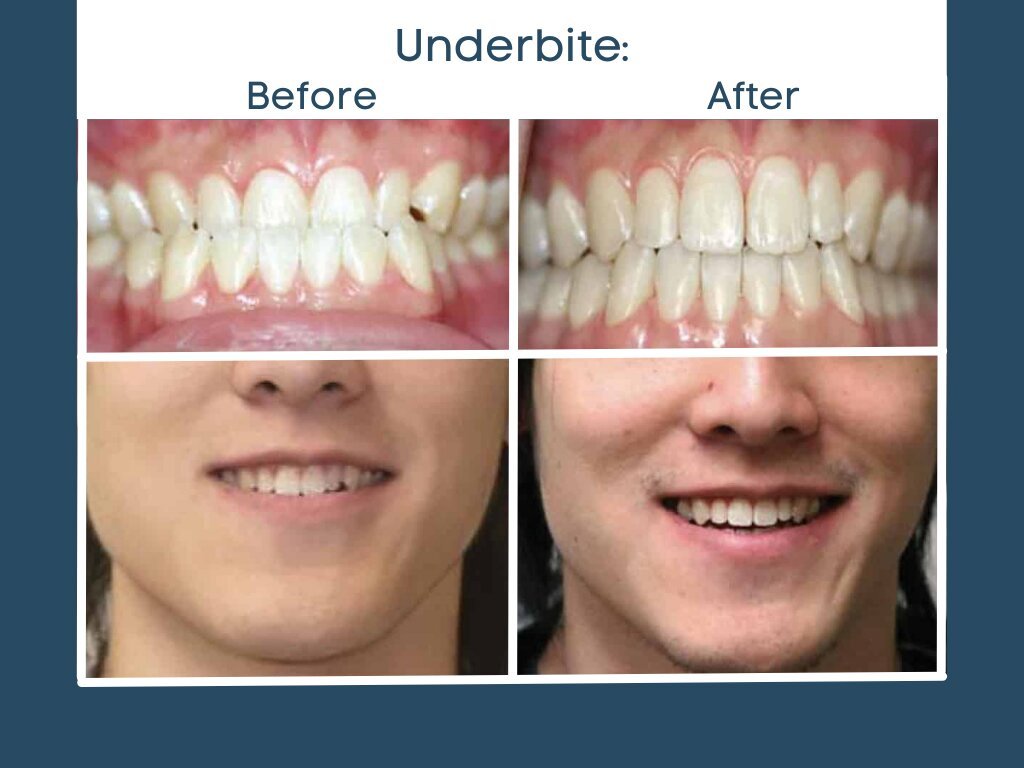
Facial injury
Facial injuries can lead to tooth damage, resulting in misalignment or malocclusion. This is common among individuals involved in contact sports like boxing and football. Fortunately, aligners can be used to correct these issues. In addition, there are aligners designed for wearing during sports activities to prevent mouth injuries.
Gap teeth
Gap teeth, medically known as diastema, are spaces or gaps between the teeth. While many people consider it to be normal, it might pose a problem for others, such as food particle collection. As a result, many people tend to seek dental care. Aligners before and after use for gapped teeth help to close the gap between the teeth, giving the person a perfect smile.
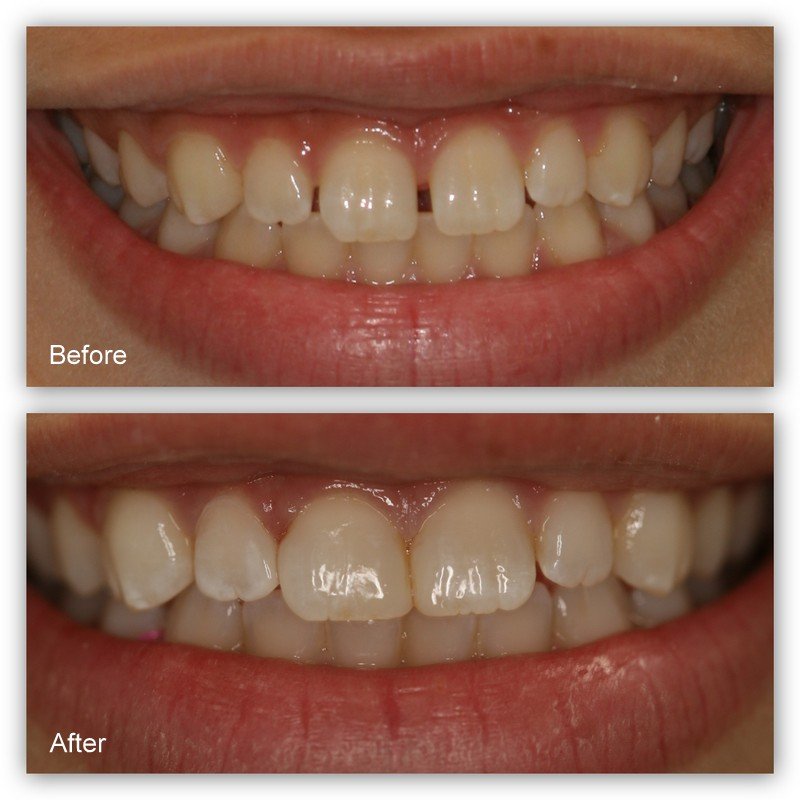
Bringing teeth together
Aligners used before and after open bite closure help bring the teeth together, correcting the biting problem and providing a perfect smile. Some patients have teeth that are spaced out, but with the help of aligners, their teeth alignment and orientation can easily be fixed.
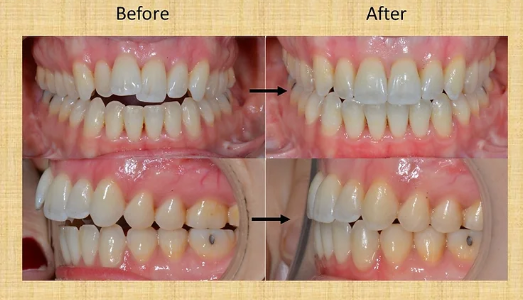
Crowding
Crowding, a prevalent dental issue characterized by insufficient space for teeth within the jaw, can significantly impact oral health and aesthetics. Fortunately, the advent of aligners has revolutionized the treatment of crowding, offering an effective solution to aligners before and after. By gently guiding the teeth into proper alignment, aligners alleviate crowding issues, enhancing both the function and appearance of the smile. Through before and after comparisons, the transformative power of aligners in resolving crowding becomes evident, demonstrating their capacity to restore harmony and balance to the dental arch.
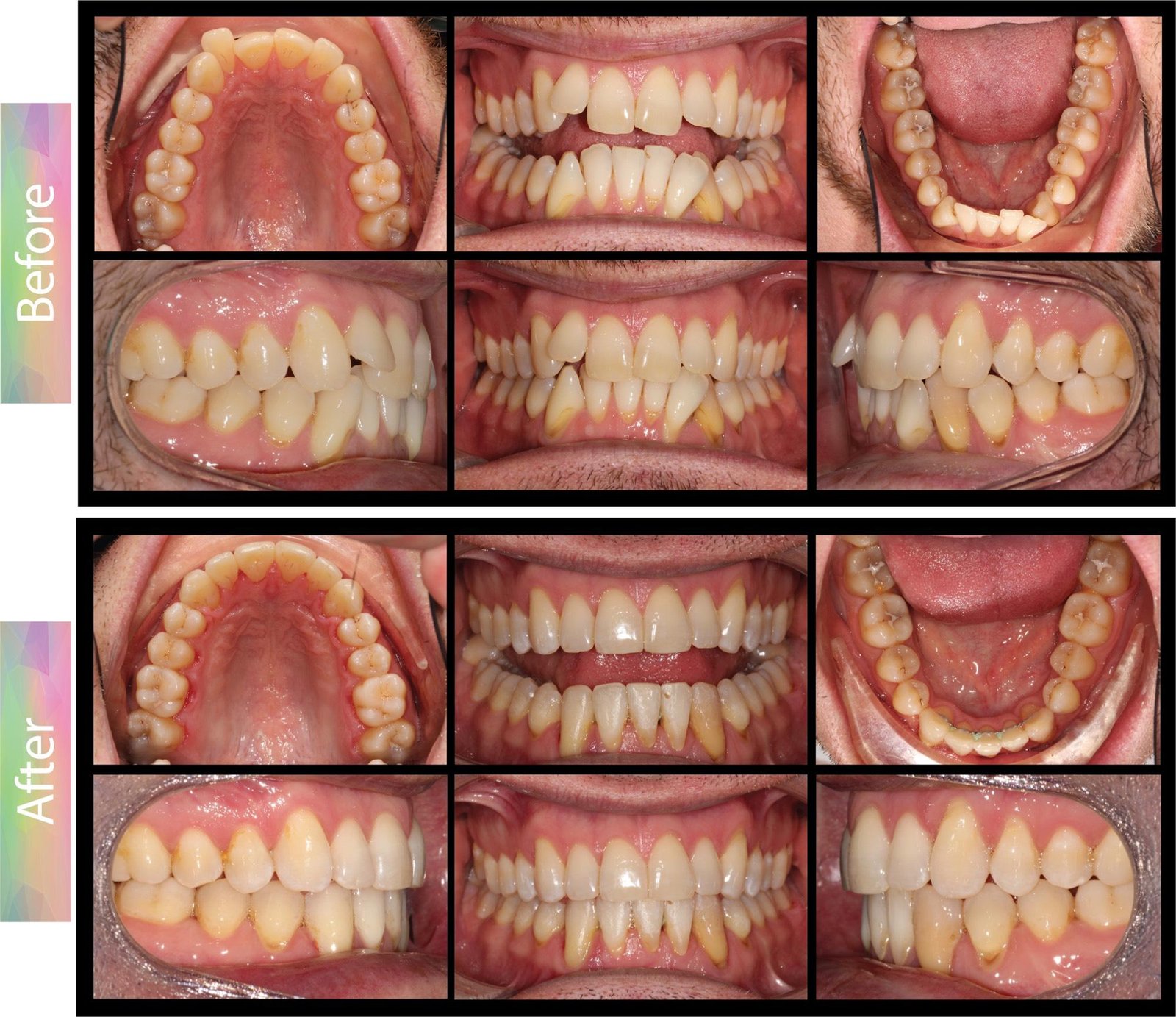
Open bite
Open bite, a common malocclusion where the upper and lower front teeth fail to make contact when the jaws are closed, can now be effectively corrected through the use of aligners before and after treatment. This condition often leads to difficulties in biting, chewing, and speech. However, aligners gradually shift the position of the teeth, encouraging proper alignment and closing the gap between the upper and lower teeth. Through before and after illustrations, we witness the remarkable transformation aligners bring to individuals struggling with this dental issue, restoring their oral function and confidence.
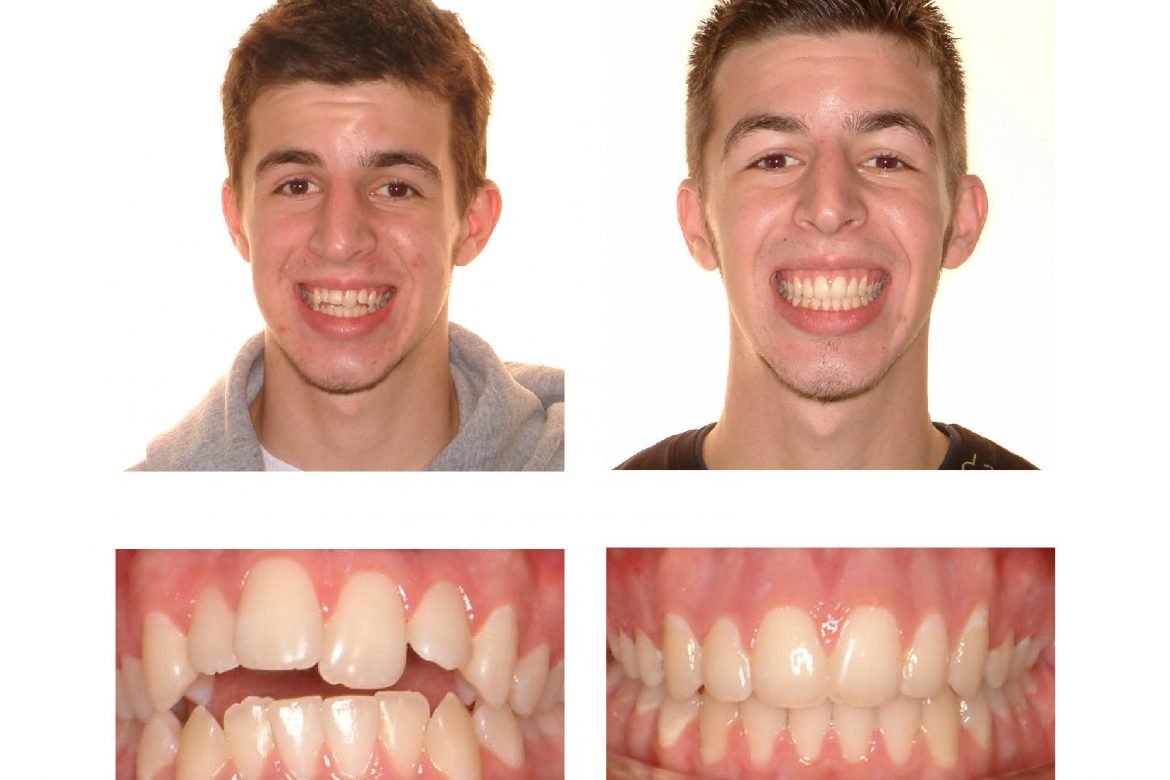
Conclusion
Aligners have a success rate of 80-90% in correcting teeth alignment problems, ranging from mild to severe. These problems can be caused by genetics, facial injury, or childhood habits. However, they can be easily corrected within 12 to 18 months with the use of aligners. If left untreated, these problems may lead to dental infections, sleep apnea, and difficulty eating. Take the first step towards achieving a perfect smile by consulting with your dentist today to discuss the best treatment plan for your problem, while considering aligners.
FAQ
Will aligners change my face?
Aligners do not change your face; instead, they adjust your teeth alignment to give you a perfect smile.
What is the success rate of aligners?
The success rate of aligners ranges from 80% to 90% for mild to moderate dental issues. However, the rate depends on factors such as the specific problem, patient compliance, and the orthodontist’s experience.
Can children wear aligners?
Children can wear aligners, which can be advantageous because they are soft and will not cause mouth ulcers. However, whether children can use clear aligners will depend on their age, as most children may not be able to properly care for them.
Author of this blog post:
Anye Tchouli Calne Forkob Linkedin

Anye Tchouli Calne Forkob is a medical student at the University of Buea and a Health Sciences student at the University of the People. He is passionate about community health outreach, self-care, and healthy lifestyle and aims to bridge the knowledge gap in the health sector.
Published by Toothhealth Team

